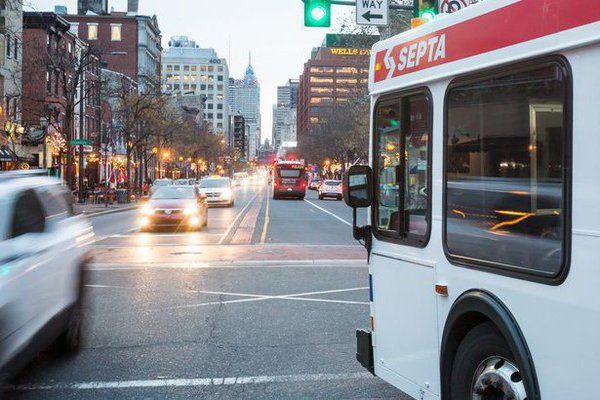SEPTA plans to overhaul its Key card fare payment system to allow riders to pay with their smartphones, smartwatches and contactless debit and credit cards.
The transit authority is seeking proposals from companies willing to the develop the new system, tentatively dubbed SEPTA Key 2.0. SEPTA aims to begin implementation in 2025 and have the system fully operational by 2029, spokesperson Kelly Greene said.
- MORE NEWS
- Morey's Piers markets summer jobs in Wildwood with seagull poop theme
- How Facebook users can claim a piece of a $725 million data privacy settlement
- Robert Morris statue vandalized at Independence National Historical Park
"So that's going to be our next generation," Greene said of SEPTA Key 2.0. "We're calling it our fair payment system, which is intended to improve the customer experience. And really, we just want to stay up to date with the constantly evolving fair payment technology."
In December, SEPTA introduced Key Tix, which allows riders to purchase bus, train, trolley, subway, and Norristown High-Speed Line tickets through the SEPTA app on their phones. The new system will offer more convenience and add other features that SEPTA riders have campaigned for, Green said.
The new system will allow riders to purchase fares for multiple people in one transaction and include more retail locations where people can purchase fares. It will automatically update customer accounts and be able to integrate with technology used by regional partners like Amtrak and PATCO. SEPTA's website and mobile app will be upgraded, too.
"Key 2.0 is really going to be a critical investment in our customers. It's an important part of our strategic plan," Greene said. "And you know, over the years, SEPTA Key is what moved SEPTA from tokens and paper tickets to the reloadable Key card for seamless travel. But after more than a decade after (the current software) was designed ... it's really due for an upgrade, and there are going to be a lot of upgrades coming with Key 2.0."
The new fare payment system will be built using open architecture, giving SEPTA the ability to upgrade its technology without needing to go back to the vendor to make changes or develop new features, Greene said. Under the current system, SEPTA must consult with Conduent, the contractor that developed it, any time an upgrade is needed. But with an open architecture structure, for instance, SEPTA engineers would be able to upgrade the technology as advancements happen with contactless payment options like Apple Pay and Google Play.
Companies interested in developing the new system must submit their proposals by July 14. SEPTA expects to award a bid this fall. Twenty companies attended an informational session hosted by SEPTA on April 13, Greene said. The transit authority also is allowing interested firms to submit questions before they send their proposals.
The design process for the SEPTA Key card platform began in 2011. Key cards were rolled out in 2016 on a limited basis. The platform was fully implemented the next year.
SEPTA has spent $285 million on the SEPTA Key card platform, with $309 committed through the end of fiscal year 2023, Greene said.
SEPTA already has invested $12 million in Key 2.0., and has committed $228.24 million over the next 12 years, SEPTA's 2024 capital spending proposals show; that budget has not been approved.
"We're looking at it as really another example of how SEPTA is trying to remove barriers from transit," Greene said. "You know, our proposed fiscal year '24 operating budget is doing that by giving our customers access to a second free transfer, and by also adding 24 Regional Rail stations to weekly and monthly trans passes. So that's adding all Zone One, Airport Line, and Center City stations to those transit passes. And, you know, that's a big deal for people that use transit. And this is just another way that we're trying to do that to make our system, you know, more accessible, more convenient for everyone."

